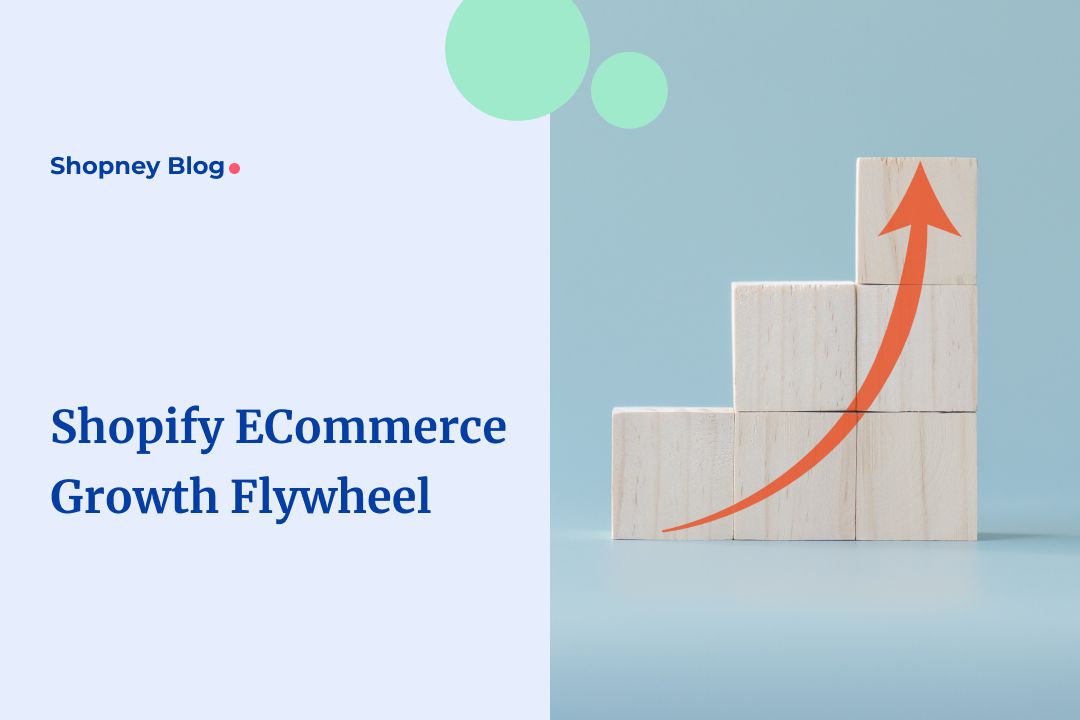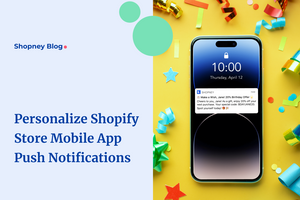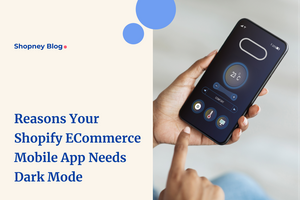
A staggering 96% of all eCommerce businesses fail within their first three years.
What separates the survivors, you ask? Sustainable growth!
The key to unlocking consistent ROI in the current decade of explosive online shopping is a powerful concept known as the eCommerce flywheel. Bid farewell to the funnel system- it had its time.
In today’s blog post, we’ll deep dive into just this: what exactly does an eCommerce flywheel mean, how does it translate to mCommerce, and how can you find your own unique strategy to keep both your customers and your investors happy?
Let’s begin!
What is an eCommerce Growth Flywheel?
Traditionally, brands relied on the sales funnel model (think the inverted pyramid we all should know by rote memory now, with levels like interest and desire..), which sees the customer’s journey as a linear process with a defined beginning and end.
Recent studies of how customers interact and engage with a brand have shown us that it does not resolve the pain points that trouble eCommerce brands today, such as:
- Skyrocketing ad costs: High CAC (Customer Acquisition Costs), diminishing returns, and stringent ad tracking guidelines.
- Friction-filled funnels: Clunky checkout processes that make customers abandon carts.
- Inconsistent Loyalty: Inability to nurture existing customers and convert them into brand advocates due to high competition.
- Data disconnect: Lack of insights into customer behavior and preferences, leading to a lack of expected personalization.
The eCommerce flywheel model, however, tackles these issues head-on and sees this customer journey as a continuous loop. It is a framework that creates momentum in a self-reinforcing cycle, which, once set in motion, continues to help the brand grow.
By focusing on key areas that feed on strengthening one another, the wheel spins faster and more efficiently, and with each rotation, you generate profits and attract more customers.
Let’s explain with an example of how reciprocity helps.
A happy customer will keep the flywheel turning through repeat purchases, positive reviews, and virality in word-of-mouth, which continues to attract new customers and boost sales, even after that initial customer’s journey with your brand is temporarily over.
How does the eCommerce growth flywheel work?
Understanding this is crucial for any online brand that wants to thrive in today's competitive digital landscape.
Let’s break it down.
1. Starting momentum: Customer Acquisition
The first stage is all about drawing potential customers to your Shopify store.
Using techniques like search engine optimization (SEO), social media marketing, influencer marketing, and targeted advertising, you can increase visibility and attract steady traffic to your Shopify store.
However, it's not just about quantity; the quality of traffic matters more!
Your strategies and marketing activities should focus on attracting the right audience - those who are most likely to engage with your brand and convert into paying customers.
Sounds simple, but it’s easier said than done.
2. Keeping it spinning: customer engagement
Once you've attracted potential customers, the next step is to keep them engaged. This phase is critical.
Build engaging experiences for your customers with user-friendly Shopify store design and intriguing and relevant content.
Gamify it by adding interactive elements and ensuring it’s personalized.
By leveraging email marketing, social media activities, and membership or loyalty programs, your brand builds strong relationships with your customers
The more engaged your customers are, the more likely they are to move to the next stage of the flywheel.
3. Accelerating the cycle: conversion and sales
Robust engagement naturally leads to conversion and sales, which is where your marketing and sales activities start to pay off financially.
At this point, you have to optimize. You need to refine your process continuously so that your Shopify store offers streamlined and intuitive navigation, a hassle-free checkout process, and clear CTA’s.
Also called CRO, conversion optimization is based on understanding your customer’s unique behavior.
Analyze data on how they interact with your site to drill down into what works and what doesn’t, which you take to your content, design, and marketing teams so that the wheel gets stronger like a well-oiled machine in time.
4. Maintaining speed: customer retention and loyalty
The flywheel, like the traditional marketing funnel, doesn’t stop when there’s a sale.
Retaining customers and nurturing their loyalty is what keeps the wheel turning.
Think post-purchase engagement, high-quality customer service, and addressing customer feedback.
Implement loyalty programs, offer exclusive deals to returning customers, and maintain regular communication through newsletters or personalized offers to significantly boost your customer retention metrics.
5. Completing the loop: advocacy and referral
The final push.
Satisfied customers are more likely to recommend your brand to others, effectively bringing new customers into the cycle and starting the process anew.
You can do this by requesting and encouraging reviews through a consistent and automated process, creating shareable content that brings virality and helps your community learn, and using referral programs to turn happy customers into brand ambassadors.
Besides bringing in more interested customers, this social proof adds credibility and trust to your brand, paying back consistently over a long period of time.
Now, how does a mobile app help strengthen this process even more?
Let’s take a look.
How does an eCommerce mobile app help enable the growth flywheel?
Integrating mobile apps is a game-changer, significantly boosting the eCommerce growth flywheel.
It’s simple - we live in a world where mobile usage dominates.
Apps are not just a convenience but a necessity, with over 6.3 billion smartphone users across the world, and mobile commerce accounting for a whopping 65.7% of all global e-commerce retail sales.
An eCommerce mobile app not only enables but also accelerates the flywheel. Here’s how:
1. Enhances customer acquisition
- Reach and accessibility: Mobile stores can create a sucky shopping experience with restricted screen sizes and clunky interfaces, which apps resolve efficiently. With the majority of internet users accessing the web and shopping through their smartphone, a mobile app not only places your Shopify store directly in their pockets, but boosts sales.
- Social Media integration: Mobile apps can seamlessly integrate with social media platforms, making it easier for customers to share products and experiences and attract more people.
2. Deepens customer engagement
- Personalized user experience: Mobile apps get access to a deeper and more granular level of user data that can be leveraged to deliver personalized browsing and shopping experiences, more relevant recommendations, and content, significantly enhancing customer engagement.
- Push notifications: This technique is unparalleled in getting instant and direct visits to any particular page on your app. Whether it's a new product launch, a special offer, or a cart reminder, push notifications are effective, if sent carefully.
- Intuitive user interface: Mobile apps provide a more responsive and intuitive user interface compared to mobile websites, which can significantly improve the user experience and engagement.
3. Optimizes conversion and sales
- Simplified checkout: Mobile apps can offer faster and more secure checkout processes, like one-click checkout, that reduce cart abandonment and boost sales.
- Increased conversion: Apps generally have higher conversion rates than mobile websites, thanks to their speed, convenience, and personalized experiences.
- Loyalty programs: With retention becoming a key tactic in 2024, subscriptions and membership programs are easy to automate and track through a mobile app, encouraging repeat purchases and higher order values.
4. Boosts customer retention and loyalty
- In-App customer support: Providing instant and round-the-clock customer support through live chat or easy access to FAQs enhances customer satisfaction and loyalty. It’s also an effective way to tackle pre-purchase anxiety, keep them informed about their order, and offer an additional advantage to ensure your app doesn’t get uninstalled.
- Exclusive offers and features: Offering app-exclusive deals or features can incentivize customers to keep the app and engage and use it regularly, helping your brand cement itself in your customers’ minds.
5. Feeds into word-of-mouth, advocacy and referral
- Easy social sharing: Integrating simple ways for customers to share your products, sales, or content with friends and family can encourage users to share their favorite items, increasing word-of-mouth referrals.
- Referral Programs: Like loyalty programs, implementing in-app referral programs can also incentivize users to bring new customers to your Shopify store mobile app.
- User-Generated Content: Encouraging and showcasing user-generated content, like reviews and photos, on product pages can enhance credibility and attract new customers.
- Creates a community: Implementing social features like forums or community boards can create a sense of community among users, fostering loyalty and engagement.
6. Integrates with cutting-edge technologies
- Augmented and Virtual Reality: Integrating AR and VR can provide immersive and interactive experiences, making shopping more engaging and informative. Take a look at how Allbirds brought this to great success in their mobile app.
Conclusion
The eCommerce growth flywheel is a powerful framework for sustainable business growth, and mobile apps are increasingly becoming a crucial part.
They enhance each stage of the flywheel and provide a platform for continuous engagement and improvement.
For eCommerce brands looking to thrive in today's competitive market, integrating a mobile app is not just an option; it's a necessity.
Thankfully, it can be easier than you’d expect by using a tool like Shopney and our robust customer support through which you can get
Ready to unleash the power of the eCommerce flywheel and take your business to the next level?



